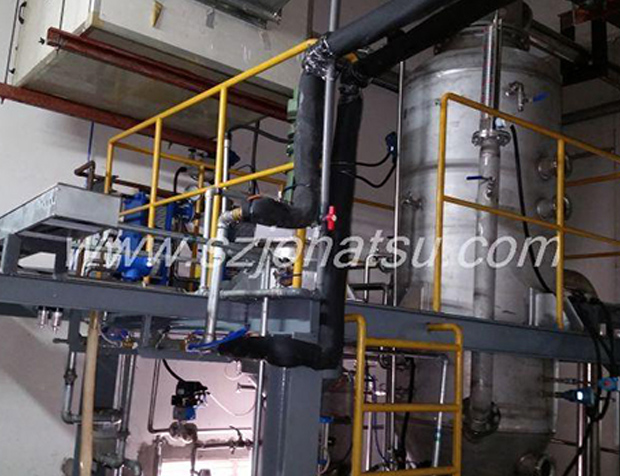MVR- falling film evaporator
The secondary steam from the evaporator is compressed by the compressor, the pressure and temperature rise, the enthalpy increase, and then sent to the heating chamber of the evaporator as heating steam, so that the material liquid is maintained in a boiling state, and the heating steam itself is condensed into water.
Consult Now
